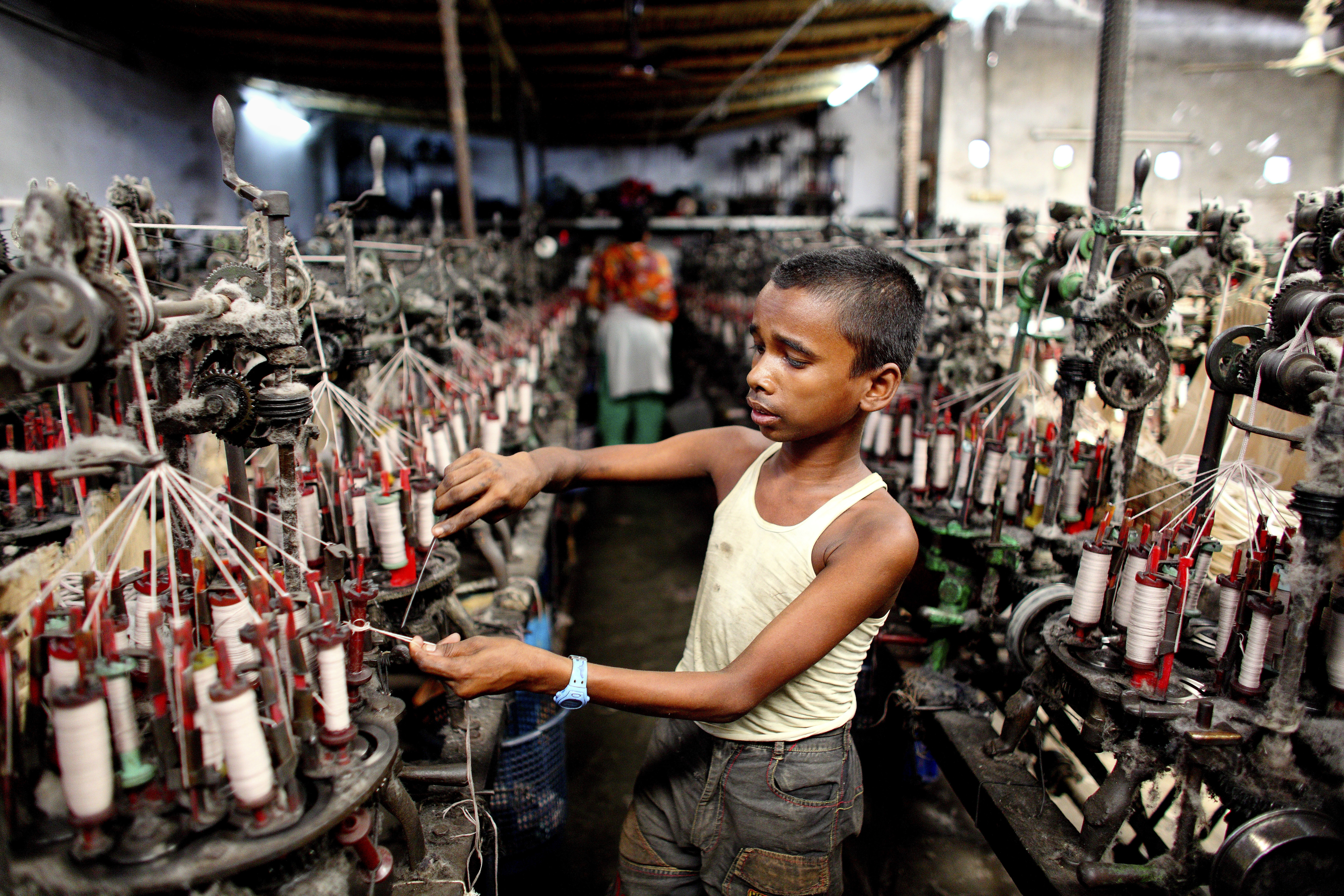Despite the laws in India, safeguarding the rights of the child, the UN Declaration of Human Rights and convention on the Rights of the Child aimed at ensuring healthy growth and holistic development of children, child labour in India has menacing proportions.
The main hurdle in the abolition of child labour lies in the laws themselves which are full of loopholes and are anomalous.
Time and again even the Supreme Court of India has passed orders on the matter with clog directives to abolish child-labour but the menace continues.
ADVERTISEMENTS:
In 1986, a law was enacted to prohibit child labour certain industries were even classified as hazardous Even the employment of children often under the pretext of family work was banned.
This clearly meant that no one should employ children in these hazardous industries not even by declaring them to be relations sons or daughters etc. Kailash Satyarthi, Secretary of SACCS when he surveyed the scenario, was often told by the factory owners that the children working there were the kith and kin and were being given training in the trade.
Even the children when questioned endorsed this statement of the factory owner.
ADVERTISEMENTS:
There are ways and ways adopted by these factory owners to evade law and evade detection. They spread over their business in the form of small units in remote villages, not so easily accessible and carry on unnoticed.
Even the law-enforcing agencies do not take that interest or can be made to look the other way — money makes the mare go.
One important factor why the employment of child labour continues as the political leadership has hardly time or inclination to look into this menace; so much so that sometimes such illegal activities have active connivance and even active interest in such activities. They may, sometimes, themselves be the owners of such a business.
Unless there is strong political will, matters would go on, and the politician feels that any undue interference by them may spoil their vote bank or even the money generated for them by these operators at the time of elections. Many of them have also passed their own legislation called Bonded Labour Abolition Act 1976, and Child Labour (Prohibition and Regulation Act 1986). Mr. Satyarthi points out that not a single case has come up under this Act — does this not sound strange?
ADVERTISEMENTS:
But before we try to eradicate this menace, why should we not look at the causes that cause it. Child Labour is an upshot of poverty and unemployment and illiteracy — poverty being the primary. The child labour becomes a big financial support to the family.
Primary Education — if that had been compulsory; the same child who works in a factory will have to be sent to the school. That has not happened and the child romping about in the streets is found to be better utilized as a bread-earner for the impoverished family.
According to the latest census reports, of the 200 million Indian children in the age group of 5-14 about 11.3 millions are laborers. But NGOs like the South Asian Coalition on Child Servitude, are presenting a very revealing number — 60 million children working in carpet, bangle, matches, fireworks, brassware, pottery and brick kiln units, and some as domestic helps.
Only the carpet industry employs nearly 300,000 children. Their tiny nimble fingers are quick to draw the beautiful Patterns and in return are paid a meager pittance as wages.
An NGO estimates that out of about three million children in the age-group of 6-14 years, a million are child labourers only in Delhi; of which 200,000 work as domestics helpers and almost an equal number as labourers.
Parents, due to their utter poverty, had taken money on loan and unable to pay back even the interest; have to put their child as a bonded labour of the loan. So the child does not receive any wag6g is put to work for 12 to 16 hours, is at times bade thrashed and even sexually abused.
This exploitation goes on under the very nose of the government. The SACCS above had rescued 45,000 bonded child labourers over a period of 15 years.
Thus, even when our nascent generation is being thus exploited, poverty among parents remains at the point where it was, as the child is hardly an earner; he is just a pawn against a loan. As Asia Labour Monitor report says, “Children in India contribute more than one- fifth of the total GNP of the country. But the 60 million child labour earns less than 10 rupees a day.
Thus the total amount is not even one-fifth of what they contribute….The adults have lost their bargaining power as employers have the last laugh — the employers have the option of hiring cheap child labour.”
Poverty is like a canker which is eating badly into the vitals of Indian politic; how and in what way can the cause be cured to root out the disease of Child Labour — fifty and more years of independence and the country still asks and shall keep asking this question. It is the social conscience which needs to be awakened and aroused but can we expect this from the politician of country who is least conscientious?
The task is on them- Hope looms far distant at the horizon — let us waits for further fifty years ahead, may there be some light at the far end of the dark tunnel. It is here where Democracy as a political system seems to suffer from a chronic disease.

